File Info
| Exam | ITIL Service Capability Operational Support and Analysis |
| Number | ITILSC-OSA |
| File Name | ITIL.ITILSC-OSA.CertDumps.2019-01-17.14q.tqb |
| Size | 4 MB |
| Posted | Jan 17, 2019 |
| Download | ITIL.ITILSC-OSA.CertDumps.2019-01-17.14q.tqb |
How to open VCEX & EXAM Files?
Files with VCEX & EXAM extensions can be opened by ProfExam Simulator.
Coupon: MASTEREXAM
With discount: 20%
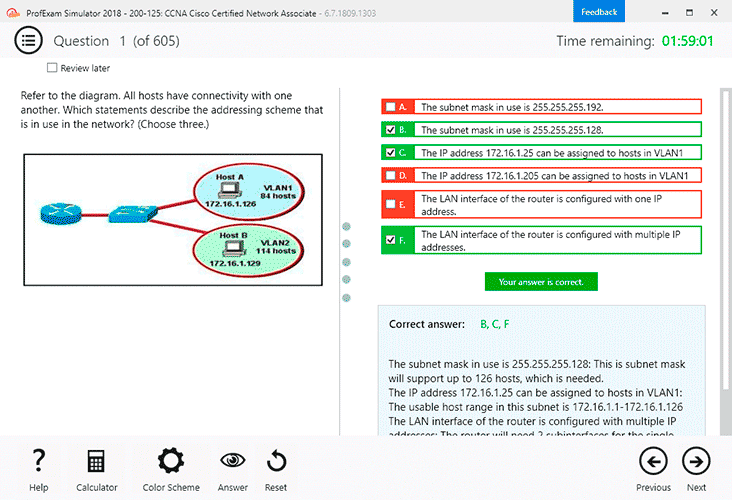
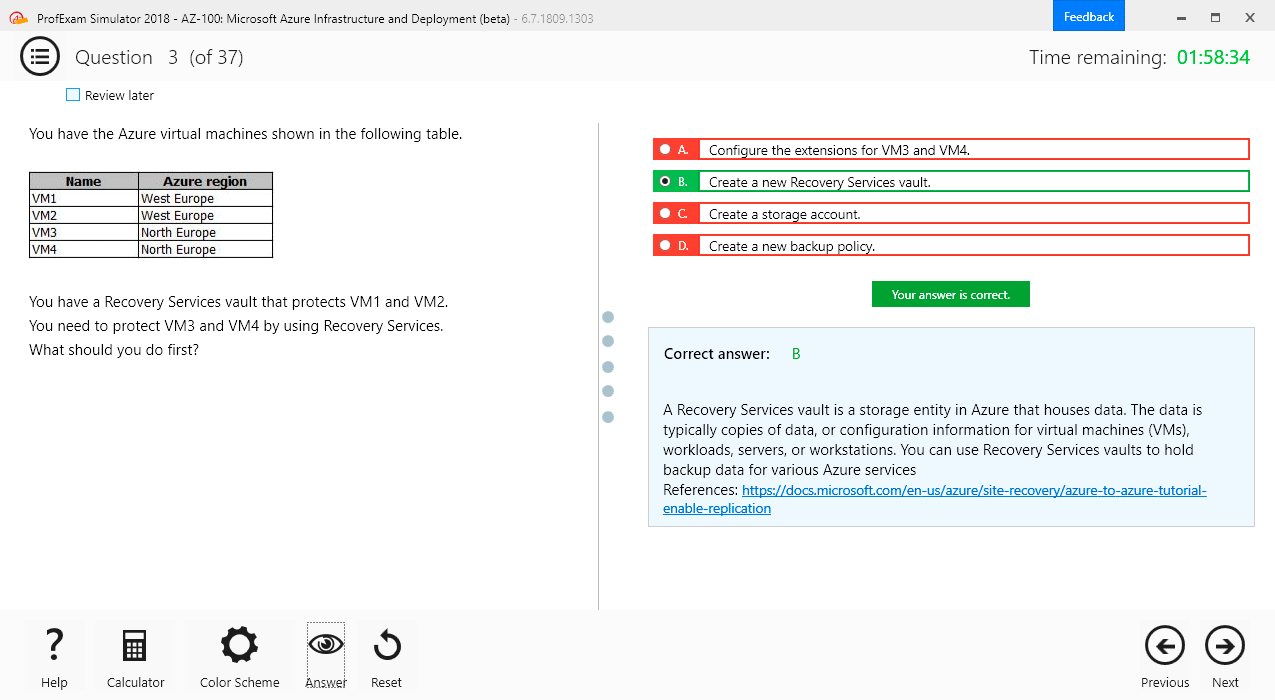
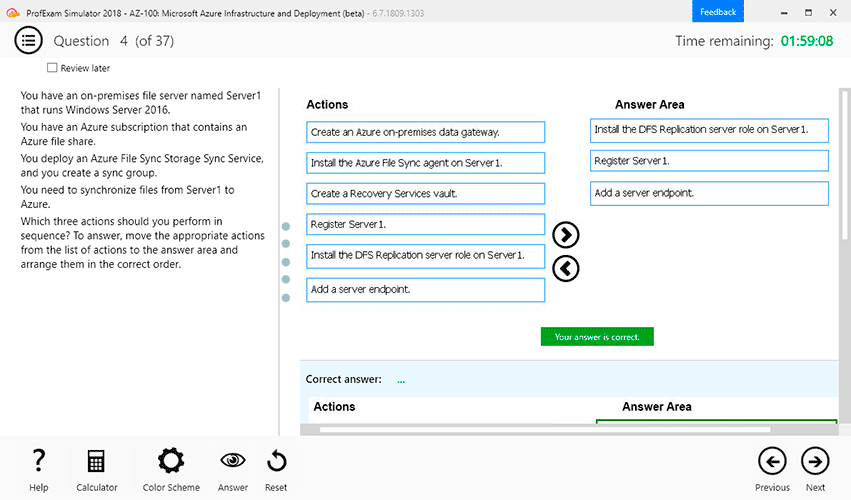
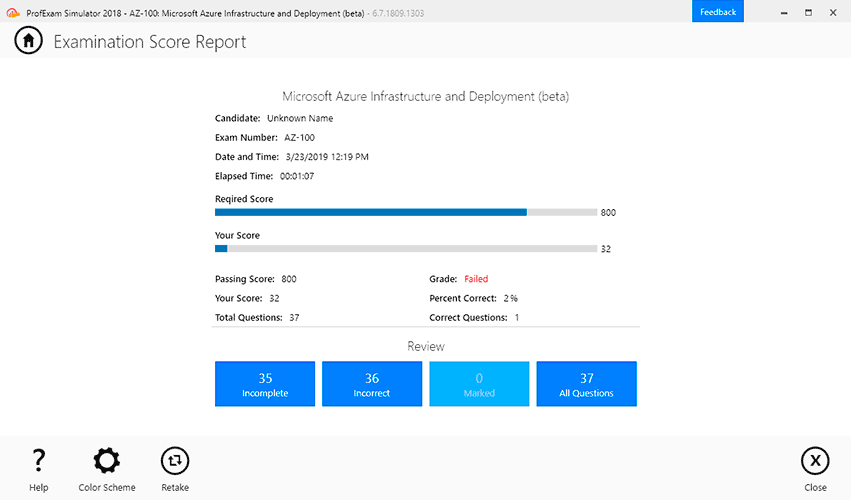
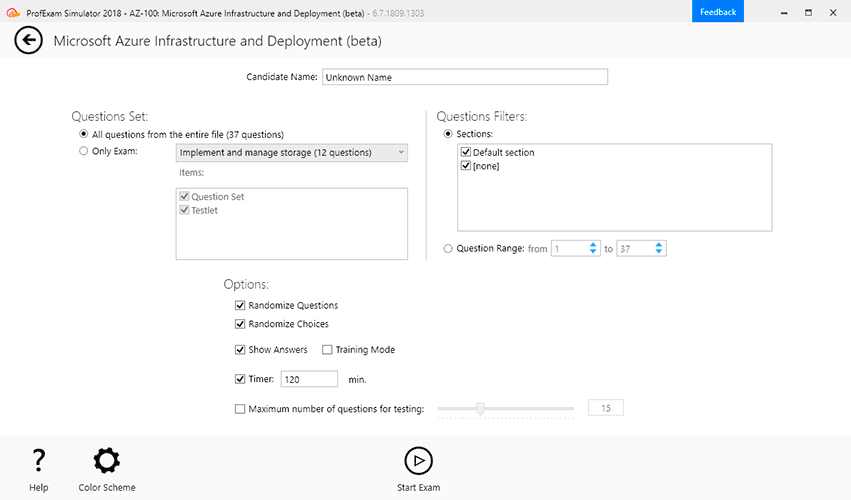

Demo Questions
Question 1
What is the difference between a Known Error and a Problem?
- The underlying cause of a Known Error is known. The underlying cause of a Problem is not known
- A Known Error involves an error in the IT infrastructure, A
- Problem does not involve such an error.
- A Known Error always originates from an Incident. This is not always the case with a Problem
- With a Problem, the relevant Configuration Items have been identified. This is not the case with a Known Error.
Correct answer: A
Question 2
There have been multiple incidents recorded by the Service Desk. It appears that the network is congested due to multiple connections.
What kind of actions should the Service Desk analyst take in this instance?
- They should ask the Capacity Manager to expand the capacity of the network
- They should ask the Problem Manager to look into the problem right away
- They should ask the Security Manager to check whether too many authorizations may have been issued.
- They should ask the Service Level Manager to revise the Service Level Agreements (SLA) with a decreased availability target
Correct answer: B
Question 3
What is the best definition of an Incident Model?
- A type of incident involving an authorized Configuration Item (CI)
- The template used by Service Desk analysts to record incidents
- A set of pre-defined steps to be followed when dealing with a known type of incident
- An Incident that is easy is solved at first contact
Correct answer: C
Question 4
Operations Control refers to?
- The managers of the Event and Access Management Processes
- Overseeing the monitoring and escalating of IT operational events and activities
- The tools used to monitor the status of the IT Network
- The situation where the Service Desk manager is required to monitor the status of the infrastructure when Service Desk Operators are not available
Correct answer: B
Question 5
Which of the following is NOT an example of a Service Request?
- A user calls the Service Desk to order a toner cartridge
- A user calls the Service Desk because they would like to change the functionality of an application.
- A Manager submits a request for a new employee to be given access to an application
- A user logs onto an internal web site to download a licensed copy of software from a list of approved options
Correct answer: B
Question 6
Scenario
Brewster’s is a toy factory that has been in business for 30 years. The company started with a small family run shop and has grown consistently over the years.
They are now supplying toy stores nationwide and are considered to be the primary supplier of children’s collectable novelty erasers.
Brewster’s IT department is relatively small (currently 15 staff) but efficient. They have recently employed an IT Manager in an attempt to improve the management of the infrastructure, as well as more effective use of resources and identification of areas for improvement.
The Brewster’s management teams do not have a lot of IT knowledge. The newly appointed IT Manager is very ITIL focused and wants to implement as many ITSM processes as is appropriate there are currently no formal processes in place. On starting with the company the IT Manager completed an internal assessment of the IT infrastructure – including staff skills analysis, and collated the results from customer satisfaction surveys completed over the last 5 years.
The main areas of concern are as follows:
Responses from customer satisfaction survey:
- Overall a consistent satisfaction level. However, responses completed during the past 12 months show an increase in customers who were unsatisfied with call waiting times when contacting the service desk for help with online orders and requests for information.
- Customers added the following additional comments:
- “Never get to speak to the same person twice when dealing with an Incident number, had to call several times to receive follow up on progress”
- “Some of the Service Desk staff seem under qualified to deal with my questions about new applications/incidents/service requests”
Results from Staff Skills Analysis:
- Staff, in general, have a good knowledge of IT systems and a basic understanding of the business processes and objectives. However, staff are not well informed of upcoming releases of new or changed services and not given adequate information to relay to the customers.
- Staff added the following additional comments:
- “Communication between Service Operation departments has become inefficient - there are meetings for the sake of meetings, but the important information we need to know to do our day to day jobs is lacking”
- “I still don’t know what half of the people do, that work in the IT department!”
Results from General IT Infrastructure assessment:
- Lack of event monitoring and planning
- Lack of input from Operational Support departments into Service Design
- Lack of skill and information sharing across the Operational Support teams with regards to Incident, Problem, Workarounds and Known Error data.
- Little to no proactive activities being carried out.
Refer to Scenario
Which of the following options would be most suitable to address the issues identified from the Customer Satisfaction Survey?
- You decide that the first two ITSM processes that need to be implemented are Incident Management and Request Fulfillment. As this will enable formal management and coordination of the Service Desk, and ensure that Incidents and Service Requests are dealt with accordingly, enabling separate logging and monitoring and faster call response times Send a formal memo to all customers, introducing yourself and your new role, thanking them for their valuable feedback and addressing the issues raised in the survey results and how you intend to resolve them.
- You decide that the first two ITSM processes that need to be implemented are Incident Management and Request Fulfillment. As this will enable formal management and coordination of the Service Desk, and ensure that Incidents and Service Requests are dealt with accordingly, enabling separate logging and monitoring and faster call response times. In addition, you will ensure that the new Incident Manager will ensure the Service Desk is the single point of contact, as a first priority. This needs to be the focus over the next quarter to ensure that this policy is adopted ASAP, you will suggest reward options to ensure that staff and end users are in no doubt that this is an essential requirement supported by senior management. Send a formal memo to all customers, introducing yourself and your new role. Thanking them for their valuable feedback and addressing the issues raised in the survey results and how you intend to resolve them.
- The results of this initial assessment are better than you had expected, you do not see any need to change things yet. You are not concerned with the additional comments as the general feedback is that customers are satisfied with the end to end service and that a 100% satisfaction is unrealistic. You will suggest to the Business that more staff is required for the Service Desk to ensure that call waiting times are reduced and that a more detailed and selective criteria is used as part of the selection process to ensure staff are at the correct skill level and competency.
- The results of this initial assessment are better than you had expected, you do not see any need to change things yet. You will suggest to the Business that it will be beneficial to complete another initial assessment in one year, after the next Customer Satisfaction Survey is completed, to compare the satisfaction levels and, if required, identify areas for improvement at that stage.
Correct answer: B
Question 7
Scenario
Brewster’s is a toy factory that has been in business for 30 years. The company started with a small family run shop and has grown consistently over the years.
They are now supplying toy stores nationwide and are considered to be the primary supplier of children’s collectable novelty erasers.
Brewster’s IT department is relatively small (currently 15 staff) but efficient. They have recently employed an IT Manager in an attempt to improve the management of the infrastructure, as well as more effective use of resources and identification of areas for improvement.
The Brewster’s management teams do not have a lot of IT knowledge. The newly appointed IT Manager is very ITIL focused and wants to implement as many ITSM processes as is appropriate there are currently no formal processes in place. On starting with the company the IT Manager completed an internal assessment of the IT infrastructure – including staff skills analysis, and collated the results from customer satisfaction surveys completed over the last 5 years.
The main areas of concern are as follows:
Responses from customer satisfaction survey:
- Overall a consistent satisfaction level. However, responses completed during the past 12 months show an increase in customers who were unsatisfied with call waiting times when contacting the service desk for help with online orders and requests for information.
- Customers added the following additional comments:
- “Never get to speak to the same person twice when dealing with an Incident number, had to call several times to receive follow up on progress”
- “Some of the Service Desk staff seem under qualified to deal with my questions about new applications/incidents/service requests”
Results from Staff Skills Analysis:
- Staff, in general, have a good knowledge of IT systems and a basic understanding of the business processes and objectives. However, staff are not well informed of upcoming releases of new or changed services and not given adequate information to relay to the customers.
- Staff added the following additional comments:
- “Communication between Service Operation departments has become inefficient - there are meetings for the sake of meetings, but the important information we need to know to do our day to day jobs is lacking”
- “I still don’t know what half of the people do, that work in the IT department!”
Results from General IT Infrastructure assessment:
- Lack of event monitoring and planning
- Lack of input from Operational Support departments into Service Design
- Lack of skill and information sharing across the Operational Support teams with regards to Incident, Problem, Workarounds and Known Error data.
- Little to no proactive activities being carried out.
Refer to Scenario
Which of the following options would be the most effective option to address the issues identified from the Staff Skills Analysis?
- Organize a meeting with the managers of each IT department and form a Communication Plan. This plan will include all agreed methods, reasons and a list of personnel to be included for communications within the Operation departments. This plan will then be distributed to all staff, with a memo that will include;A photograph of each IT staff member with job title.Brief Job Description and explanation of their day to day activities.In addition, make a proposal to the Business that aRelease and Deployment Manager is needed, this role will not only take on the responsibility of implementing a formal Release and Deployment process but will, manage the build, test and deployment departments and will also ensure that there is a consistent communication route to the service desk on upcoming releases and organizing training/knowledge updates and consultation with service desk staff on new or changed services.
- Organize a meeting with the managers of each IT department and form a Communication Plan. This plan will include all agreed methods, reasons and a list of personnel to be included for communications within the Operation departments. This plan will then be distributed to all staff, with a memo that will include;A photograph of each IT staff member with job titleBrief Job Description and explanation of their day to day activitiesIn addition, ask for the service desk to be sent copies of the release schedule so they are informed of upcoming releases.
- Recommend to the Business that a new staff training program needs to be implemented that will include one service desk member per week shadowing a member of staff in each of the Business Process areas to learn how they do things and what the business objectives are. In addition, request a weekly update from the build, test and deployment areas on any upcoming releases, including any relevant information that will enable the service desk staff to provide a better service to the customer.
- No immediate action required. You will work on a new training and communication policy that will formalize the process of communication and knowledge transfer between departments. You will also recommend that the first ITSM process to be implemented with be a formalized Incident Management process to ensure that effective measurements and analysis is taking place and that there is monitoring of staff competency and skill.
Correct answer: A
Question 8
Scenario
Brewster’s is a toy factory that has been in business for 30 years. The company started with a small family run shop and has grown consistently over the years.
They are now supplying toy stores nationwide and are considered to be the primary supplier of children’s collectable novelty erasers.
Brewster’s IT department is relatively small (currently 15 staff) but efficient. They have recently employed an IT Manager in an attempt to improve the management of the infrastructure, as well as more effective use of resources and identification of areas for improvement.
The Brewster’s management teams do not have a lot of IT knowledge. The newly appointed IT Manager is very ITIL focused and wants to implement as many ITSM processes as is appropriate there are currently no formal processes in place. On starting with the company the IT Manager completed an internal assessment of the IT infrastructure – including staff skills analysis, and collated the results from customer satisfaction surveys completed over the last 5 years.
The main areas of concern are as follows:
Responses from customer satisfaction survey:
- Overall a consistent satisfaction level. However, responses completed during the past 12 months show an increase in customers who were unsatisfied with call waiting times when contacting the service desk for help with online orders and requests for information.
- Customers added the following additional comments:
- “Never get to speak to the same person twice when dealing with an Incident number, had to call several times to receive follow up on progress”
- “Some of the Service Desk staff seem under qualified to deal with my questions about new applications/incidents/service requests”
Results from Staff Skills Analysis:
- Staff, in general, have a good knowledge of IT systems and a basic understanding of the business processes and objectives. However, staff are not well informed of upcoming releases of new or changed services and not given adequate information to relay to the customers.
- Staff added the following additional comments:
- “Communication between Service Operation departments has become inefficient - there are meetings for the sake of meetings, but the important information we need to know to do our day to day jobs is lacking”
- “I still don’t know what half of the people do, that work in the IT department!”
Results from General IT Infrastructure assessment:
- Lack of event monitoring and planning
- Lack of input from Operational Support departments into Service Design
- Lack of skill and information sharing across the Operational Support teams with regards to Incident, Problem, Workarounds and Known Error data.
- Little to no proactive activities being carried out.
Refer to Scenario
Through further investigation you identify that there is no formal means of collecting data to identify service improvement, other than customer surveys. These are very subjective and do not give a balanced picture regarding quality of service.
Through discussions with the Continual Service Improvement Manager, you decide to start collecting a range of metrics to help identify service improvements.
Which metrics would be relevant to Service Desk?
- % of calls resolved by Service DeskAverage time to identify incidentAverage time to escalate incident% of user updates conducted within target timesCustomer feedbackAverage Service Desk cost of handling incident
- % of calls resolved by Service DeskAverage time to resolve incidentAverage time to escalate incident% of customer updates conducted within target timesCustomer feedbackAverage Service Desk cost of handling incident
- o % of calls answered by Service DeskAverage time to escalate incident% of customer updates conducted within Service Desk hoursCustomer feedbackAverage cost of handling incident
- % of calls answered by Service DeskAverage time to resolve problemsAverage time to escalate problem% of customer updates conducted within Service Desk timesCustomer feedbackAverage cost of handling problem
Correct answer: B
Question 9
Scenario
NEB is a financial management company that specializes in lending money for substantial property investments. They have a large IT department that is currently using the following ITSM processes:
- Service Level Management
- Availability Management
- IT Service Continuity Management
- Information Security Management
- Incident Management
- Problem Management.
Each of these processes have been implemented within the planned target time and are working effectively and efficiently. Staff have adapted to the changes in a very positive manner and see the benefits of using the ITIL framework.
Last Saturday, there was a security breach. A previous member of staff, who has left the company and joined a competitor organization, has been able to gain access to several client lending files. After initial investigation, it was found that access was not terminated when the staff member left the company – this has highlighted that there are insufficient processes in place to ensure access rights are terminated when staff leave the company, change roles etc and there is ongoing investigation to see how many other previous staff still have access to the system.
The business has requested immediate recommendations from the IT Manager, as to what can be done to ensure this situation does not happen again and how best to inform clients, with reference to the security breach.
Refer to the scenario.
Which of the following options is most suitable to deal with this situation?
- Your first recommendation is to implement the Access Management process as soon as possible. You suggest that as the IT organization has already effectively and efficiently implemented six processes, they will be able to manage a well executed and fast implementation. This process will ensure that access is provided to those who are authorized to have it and will ensure access is restricted to those who are not.With regards to informing clients, you recommend that clients are not told of the situation as you feel it will be too damaging to the NEB reputation and will result in a catastrophic loss of clientele. You suggest that if clients are contacted by the competitor organization, they cannot prove that any information has been obtained via NEB files and (as there is now a plan to implement Access Management) NEB can confidently reassure clients that there is ample security and access management in place to ensure this situation could never arise.
- Your first recommendation is to implement the Access Management process as soon as possible. You suggest that as the IT organization has already effectively and efficiently implemented six processes, they will be able to manage a well executed and fast implementation. As Access Management is the execution of the policies laid out within the Availability and Information Security Processes, the foundations are already laid. This process will ensure that access is provided to those who are authorized to have it and will ensure access is restricted to those who are not. To ensure alignment between the Business and IT, there will need to be integration with the Human Resources department to ensure there are consistent communications with regards to staff identity, start and end dates etc. With regards to informing clients of the breach, you suggest that the clients affected by the breach must be informed ASAP. You recommend a formal letter is sent from senior management to reassure clients that the situation is being taken seriously and what actions are taking place to ensure this never happens again. You are aware that this could damage the company’s reputation, as security is a critical success factor, but feel that the specific clients must be informed by NEB ASAP, as there is a high risk they will be approached by the competitor organization.
- Your first recommendation is to implement the Access Management process as soon as possible. This process will ensure that access is provided to those who are authorized to have it and will ensure access is restricted to those who are not.With regards to informing clients of the breach, you suggest that only the specifically affected clients are informed of the breach, via a formal letter sent from senior management to reassure clients that the situation is being taken seriously. You suggest that the tone and focus of the letter should emphasize the following points:
- There has been a ‘minor’ security breach fault of member of staff, who’s employment has now been terminated
- No data has been ‘lost or changed’
- Sufficient action has been taken to ensure this situation does not happen again and NEB would like to assure their clients that there security and continued
confidence is of the highest importance. - Your first recommendation is to implement the Access Management process as soon as possible. You suggest that as the IT organization has already effectively and efficiently implemented six processes, they will be able to manage a well executed and fast implementation. This process will ensure that access is provided to those who are authorized to have it and will ensure access is restricted to those who are not.With regards to informing clients of the breach, you suggest that all clients need to be informed of the breach and the action being taken to ensure this does not happen again. You are aware that this could damage the company’s reputation, but are concerned that if only the specifically affected clients are informed, word will spread and the entire client base will feel they have been kept out of the loop on such an important issue and further damage to NEB’s reputation will be felt.
Correct answer: B
Question 10
Scenario
Vericom is a leading provider of government, business and consumer telecommunication services, and is currently seeking ways in which to improve its utilization of IT services to drive growth across its’ multiple lines of business. One of the largest organizations in the United Kingdom, Vericom is comprised of the following business units:
- Verinet (providing ADSL, cable, 3GSM, dialup and satellite services)
- Infrastructure Services (planning, installing and maintaining the PSTN and mobile network infrastructure)
- VericomTV (Pay TV)
- Consumer Sales and Marketing (including 400 Vericom retail outlets)
- Business and Government
- Finance and Administration
- Information Technology Services (Shared Service Unit, however some business units also have their own internal service provider)
- Human Resources
- Vericom Wholesale (for wholesale of Vericom infrastructure services)
Due to the extensive scope of infrastructure deployed and large employee and customer base, Vericom continues to rely on legacy systems for some critical IT services; however this is seen as a barrier to future organizational growth and scalability of services offered. The CIO of Vericom has also raised the concern that while improvements to the technology utilized is important, this also needs to be supported by quality IT Service Management practices employed by the various IT departments.
The project of improving the IT Service Management practices employed by Vericom has been outsourced to external consultants who are aware of the major IT refresh that is going to be occurring over the next 24 months.
Refer to the scenario.
With Vericom being a large organization (approximately 40 000 staff), some of the business units have developed their own internal IT departments to supplement the services provided by the centralized Information Technology Services (ITS) department. This has occurred due to the specialized needs and requirements for technology, specifically Verinet, VericomTV and Consumer Sales and Marketing.
While the decision has been made that this organizational structure is to remain in place, there has been identified issues relating to a lack of consistency in IT Service Management processes used by the different departments and unclear boundaries for the responsibilities of the various IT Service Desks. This has resulted in:
- End users calling the wrong Service Desk, requiring the call to be redirected to the appropriate group
- Inconsistency in the categorization and classification of service requests, incidents and problems, causing confusion and frustration when there are multiple IT departments involved
- Known Errors being recorded internally within the various IT departments, which may in fact have a wider impact on the whole organization when these are not visible to everyone
- Inconsistency in the Service Management systems and tools used for handling service requests, incidents, problems and Known Errors.
From the following responses, which BEST represents the approach you would take to overcome the issues described above?
- You realize a coordinated approach is the best method, including:
- The development of the ITS Service Desk to be the single point of contact for ALL end user (internal) queries. This will be performed over a 6 month period, to take account for any training and transfer of knowledge that needs to occur. This Service Desk will then escalate to the appropriate second line group (from any of the IT departments) as required.
- Develop consistency across all departments for categories and priority coding systems used for all service requests, incidents and problems.
- Build or purchase a consistent service management tool that will be used by all IT departments for managing incidents, problems, Known Errors and service requests.
- Holding regular review sessions involving staff from each of the IT departments to discuss current issues, recurring and potential problems future initiatives.
- You realize a phased approach is the best method, including four phases:
- Phase 1 – Build or purchase a service management tool that will be used by all IT departments for managing incidents, problems and service requests
- Phase 2 – Standardize the use of ITIL processes used by the ITS department across all IT departments at Vericom
- Phase 3 – Deliver training and awareness sessions for staff regarding the importance of the processes and how they should be used.
- Phase 4 – Review the success of the project and pass any lessons learnt onto future projects
- You realize a coordinated approach is the best method, including:
- Developing a telephone system that will route calls to the appropriate Service Desk based on the user’s input. This should also provide the capability for a Service Desk analyst to call them back during peak periods.
- Develop consistency in all the categories assigned to service requests, incidents and problems across all IT departments.
- Build or purchase a service management tool that will be used by all IT departments for managing incidents, problems, Known Errors and service requests
- Hold regular review sessions involving key staff from each of the IT departments to discuss current issues and potential problems.
- You realize that improving the business awareness of IT is most important, and address the issues by:
- Identifying the training requirements of end users to improve their use of IT service
- Implement an online Service Catalogue for all IT Services, with self-help capabilities to log and track incidents, problems and service requests
- Assist Service Level Management in improving the visibility of the IT organization in general, and identify areas of customer satisfaction that need improving
- Build or purchase a service management tool that will be used by all IT departments and end users for managing incidents, problems, Known Errors and service requests
Correct answer: A

